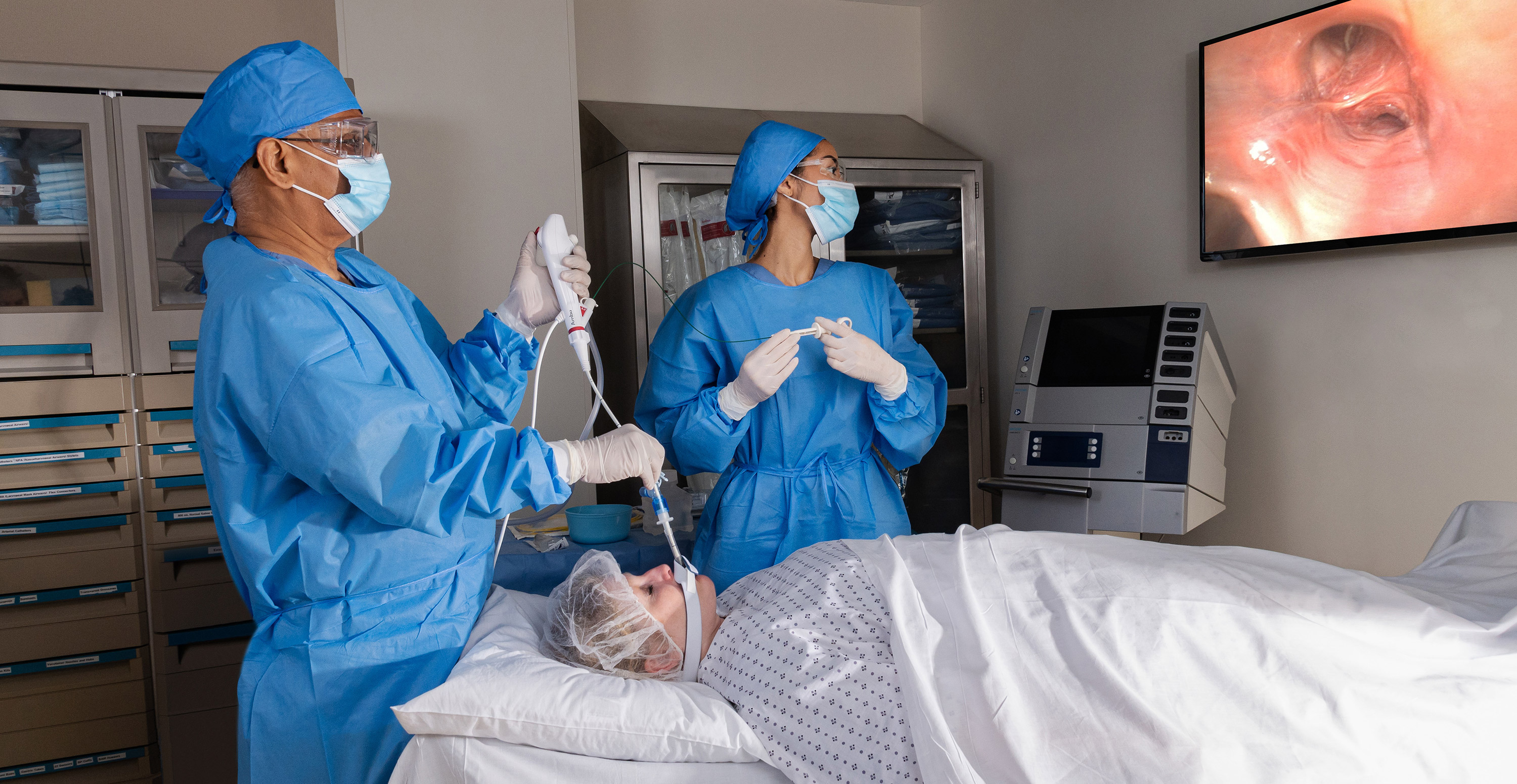
A recent study found that three of four single-use flexible bronchoscopes that were tested performed better in flexion and extension than reusable competitors.
The results were part of a poster presentation at the World Congress for Bronchology and Interventional Pulmonology (WCBIP) 2022 in Marseille, France, based on research by Dr. Jonathan Kurman at the Medical College of Wisconsin and others. Ambu provided funding for the evaluation and testing.
The conventional wisdom in interventional pulmonology has long been that reusable bronchoscopes perform better than their single-use counterparts, but this new research counters that thinking. The latest single-use flexible bronchoscopes are a significant advancement over prior generations, according to the authors.
“Many of their attributes are comparable to or even superior to reusable flexible bronchoscopes,” the authors write. “Single-use flexible bronchoscopes may represent a viable alternative to reusable flexible bronchoscopes for interventional pulmonology procedures in the bronchoscopy suite, operating room, and intensive care unit.”
Single-use flexible bronchoscopes traditionally have been used in operating rooms and intensive care units for procedures such as airway inspections and bronchoalveolar lavage, largely because of perceptions of their performance compared with reusable bronchoscopes, the authors note.
Several medical device companies have recently developed new single-use products, including the Ambu® aScope™ 5 Broncho HD System.
Ambu’s new bronchoscope, which received 510(k) regulatory clearance from the U.S. Food and Drug Administration in July 2022, is specifically designed to handle the most challenging procedures in the bronchoscopy suite.
The Medical College of Wisconsin poster looks at single-use bronchoscopes created by Olympus, Boston Scientific and Verathon, in addition to Ambu, and compares them with a reusable Olympus scope.
Ambu’s aScope 5 had more degrees of flexion and extension with all accessory tools compared to the reusable and the disposable bronchoscopes tested. The Ambu bronchoscope and the reusable device had similar depth of field and field of view compared against the other scopes.
The Ambu scope and the Olympus reusable were able to reach the same anatomical location with biopsy forceps, in the right upper lobe apical segment during testing on a cadaver. They also both scored 5 on a 1 to 5 scale in image sharpness, near field resolution and far field resolution.
None of the scopes performed significantly better in suction performance of 60mL of water or 60mL of viscous material, according to the research.
Demand for single-use bronchoscopes is expected to grow over the next decade as the number of people living with critical respiratory health conditions rises worldwide, according to a recent report.
That report from Transparency Market Research identifies cost effectiveness and infection control advantages as key factors propelling the forecasted growth of single-use bronchoscopes.
In the U.S. specifically, the respiratory afflictions of the rising number of aging baby boomers are expected to drive the market.
In the U.S., more than 40 million procedures are done annually using flexible endoscopes across a variety of clinical specialties.
Typically, reusable endoscope and image processing systems, which can cost $75,000 to $100,000, have long product life cycles. One of the powerful advantages that single-use endoscopes have over their reusable counterparts is the speed with which technological change can occur — at affordable prices for hospitals.


